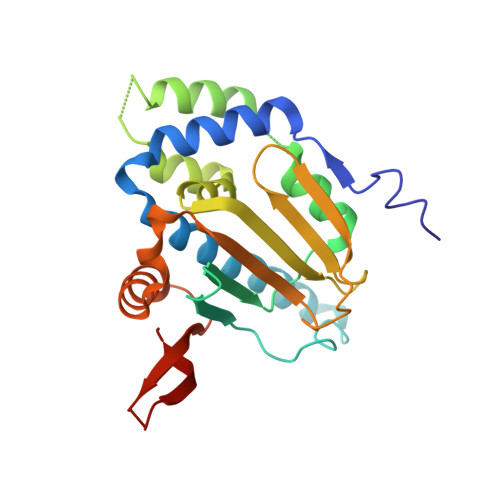Structure of Unliganded GRP94, the Endoplasmic Reticulum Hsp90: BASIS FOR NUCLEOTIDE-INDUCED CONFORMATIONAL CHANGE
Dollins, D.E., Immormino, R.M., Gewirth, D.T.(2005) J Biological Chem 280: 30438-30447
- PubMed: 15951571
- DOI: https://doi.org/10.1074/jbc.M503761200
- Primary Citation of Related Structures:
1YSZ, 1YT0, 1YT1, 1YT2 - PubMed Abstract:
GRP94, the endoplasmic reticulum paralog of Hsp90, is regulated by adenosine nucleotides that bind to its N-terminal regulatory domain. Because of its weak affinity for nucleotides, the functionally relevant transition in GRP94 is likely to be between the unliganded and nucleotide-bound states. We have determined the structure of the unliganded GRP94 N-domain. The helix 1-4-5 subdomain of the unliganded protein adopts the closed conformation seen in the structure of the protein in complex with inhibitors. This conformation is distinct from the open conformation of the subdomain seen when the protein is bound to ATP or ADP. ADP soaked into crystals of the unliganded protein reveals an intermediate conformation midway between the open and closed states and demonstrates that in GRP94 the conversion between the open and closed states is driven by ligand binding. The direction of the observed movement in GRP94 shows that nucleotides act to open the subdomain elements rather than close them, which is contrary to the motion proposed for Hsp90. These observations support a model where ATP binding dictates the conformation of the N-domain and regulates its ability to form quaternary structural interactions.
- Department of Biochemistry, Duke University Medical Center, Durham, North Carolina 27710, USA.
Organizational Affiliation:


















